Is “Winnie the Pooh” the original “Inside Out”?
Inside Out (2015) was widely praised for its inventive anthropomorphism of the emotions that manage a child’s mind. The film’s team of emotions is a clever interpretation based on some sound scientific research, telling a story to which nearly everyone can relate. But using characters to embody emotions or singular aspects within a complex personality is far from a brand-new concept. Starting in the 1960s, Disney began adapting the Winnie the Pooh stories into films, evolving Pooh into one of their largest franchises. Arguably, the beloved children’s tale, like Inside Out decades later, separates the emotional components of a young boy into a range of animal personalities.
Way back in 1926, A.A. Milne wrote his first Winnie the Pooh book, which tells the stories of Winnie, Eeyore, Rabbit, Piglet, Owl and the other residents of the Hundred Acre Wood. Within the story, the fantastic tales of the animals are imagined by a boy named Christopher Robin, named after Milne’s own son, while the other characters were modeled after the boy’s actual toys. Each of these characters boast character-defining personality traits that can easily represent Christopher Robin’s own variety of childhood emotions. Lining up Christopher Robin’s friends with the primary characters of Inside Out yields a number of easy parallels.
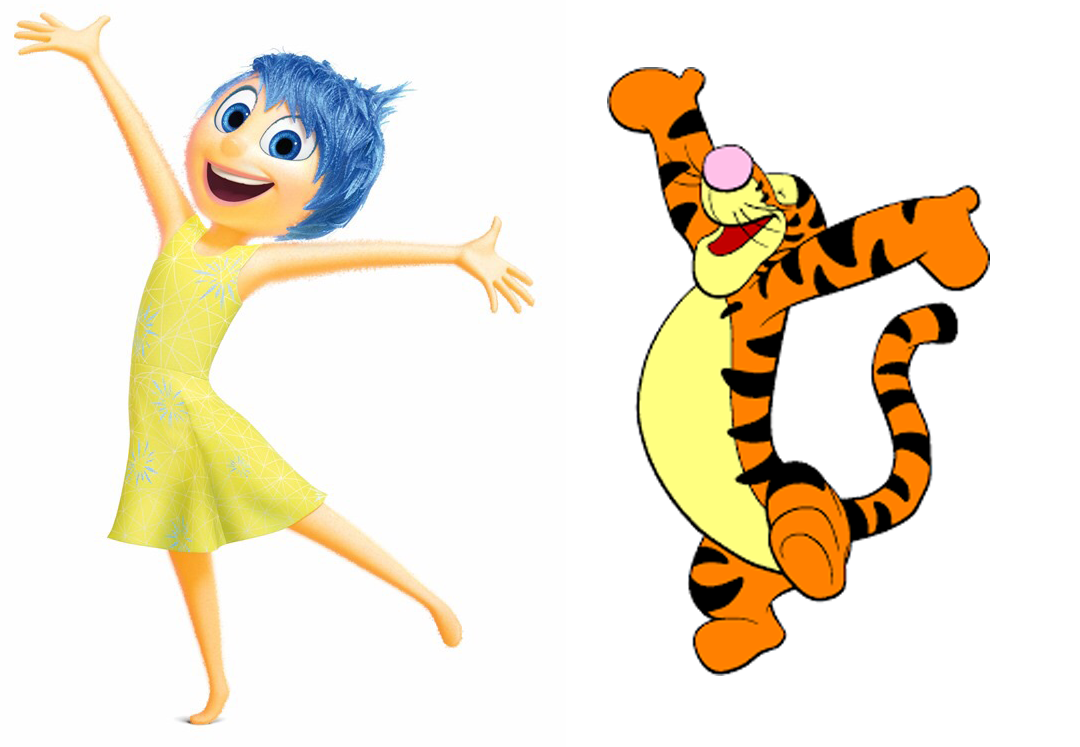
Inside Out’s Joy (Amy Poehler), an enthusiastic and spontaneous beacon of happiness, shares many central characteristics with Winnie the Pooh’s Tigger. It takes a lot to upset either character, and both are in search of excitement and exhilaration in any situation. They frequently try to cheer up other characters, often with no luck, and fail to understand why others aren’t as effortlessly cheerful as they are.

Sadness (Phyllis Smith) and Eeyore are both frumpy and blue, sluggishly sulking about their environments and spreading their misery to others. Self-deprecating and lacking self-esteem, neither understands why anyone else would want to be in their presence or pay them any mind, opting to always see the way every situation can go wrong. Both serve the important purpose of providing contrast, as one can never appreciate the good in life without also knowing the bad. They also possess brains, insight and hidden talents that other characters lack, which sometimes come in handy in crucial moments.
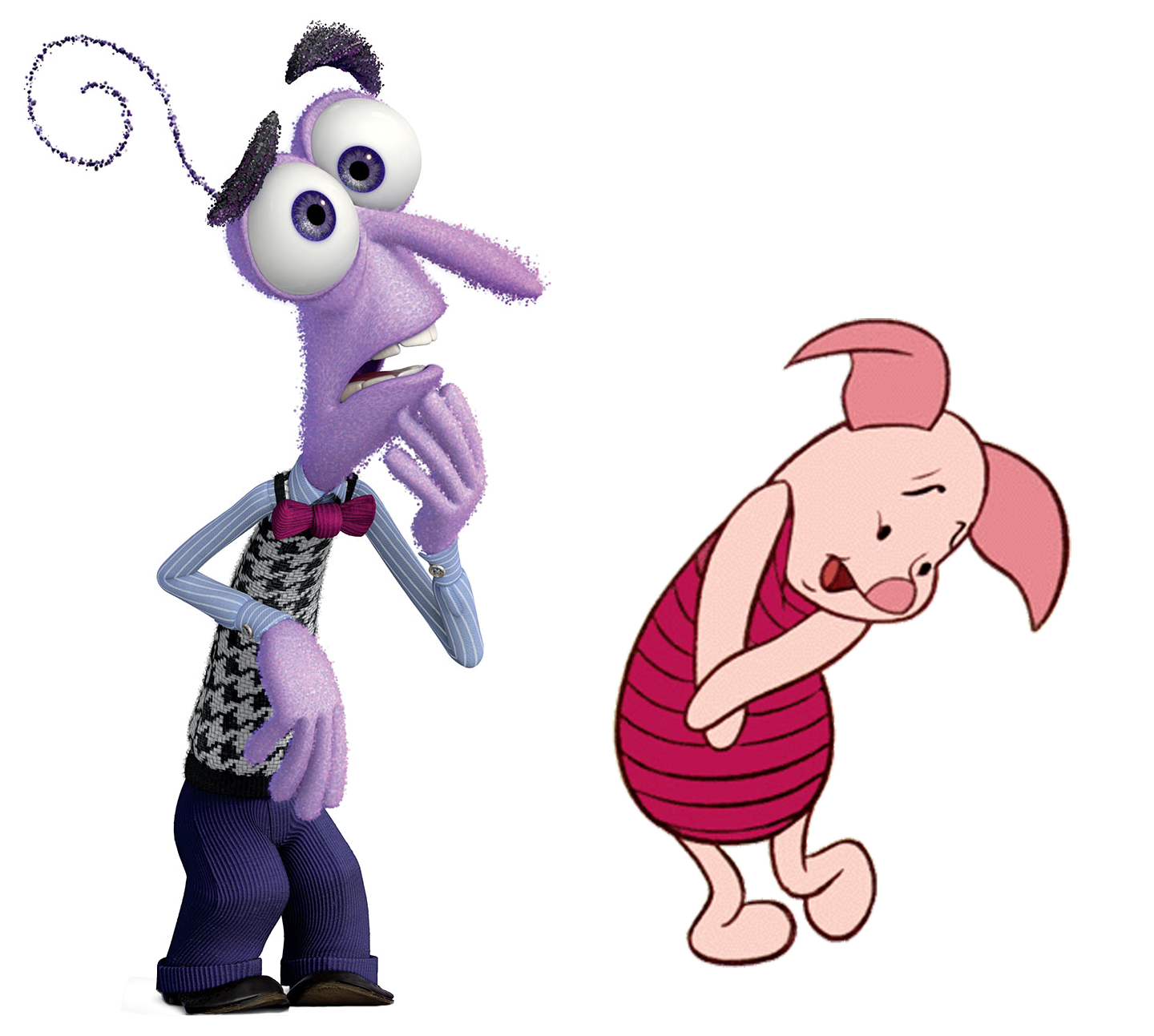
Fear (Bill Hader) is the Piglet of the Inside Out group, endlessly afraid and overcautious of all decisions. He often goes along with the rest of the group due to peer pressure, speaks with a stammering tone of indecision, and never appears fully comfortable with what is happening.
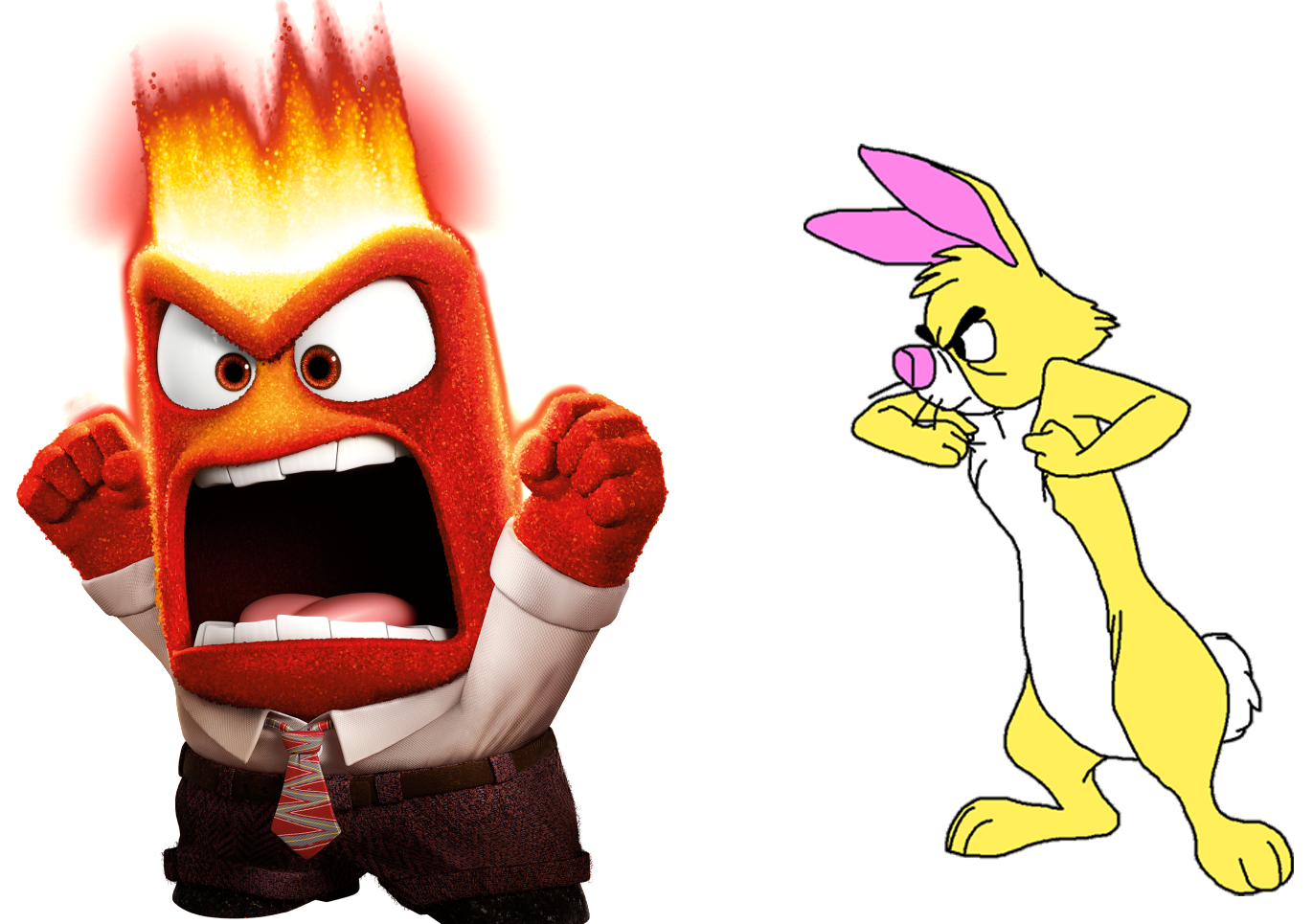
Anger (Lewis Black) mirrors Rabbit, the character with the shortest amount of patience who is easily frustrated by the behavior of everyone else, particularly Pooh. Like Anger, Rabbit has his moments of calm and understands he can’t dominate every moment but is quick to chime in and show frustration after even small triggers.
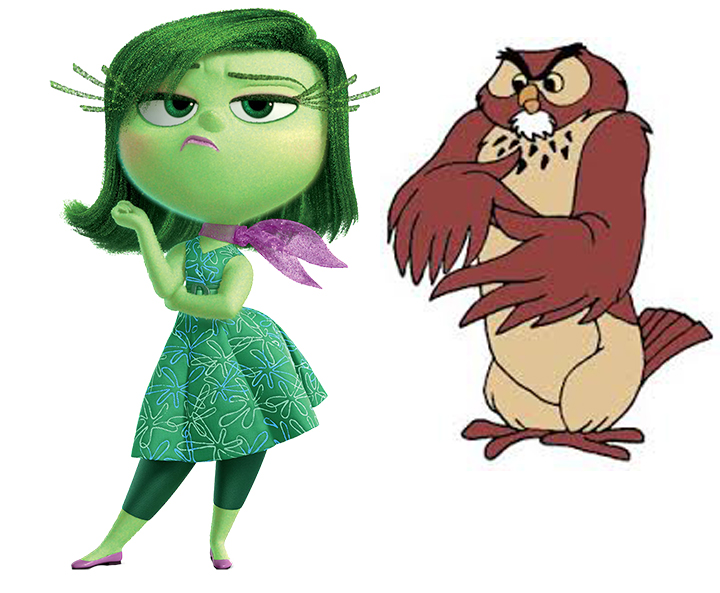
Disgust (Mindy Kaling) is the Inside Out character most difficult to parallel with Pooh, but perhaps she matches best with Owl. Owl is intellectual and snobby, often correcting the other characters and taking pride in his dubious wisdom (he is hardly able to spell two words correctly), much in the way that Disgust aims to avoid things she deems unpleasant and looks down on uncool things and people.
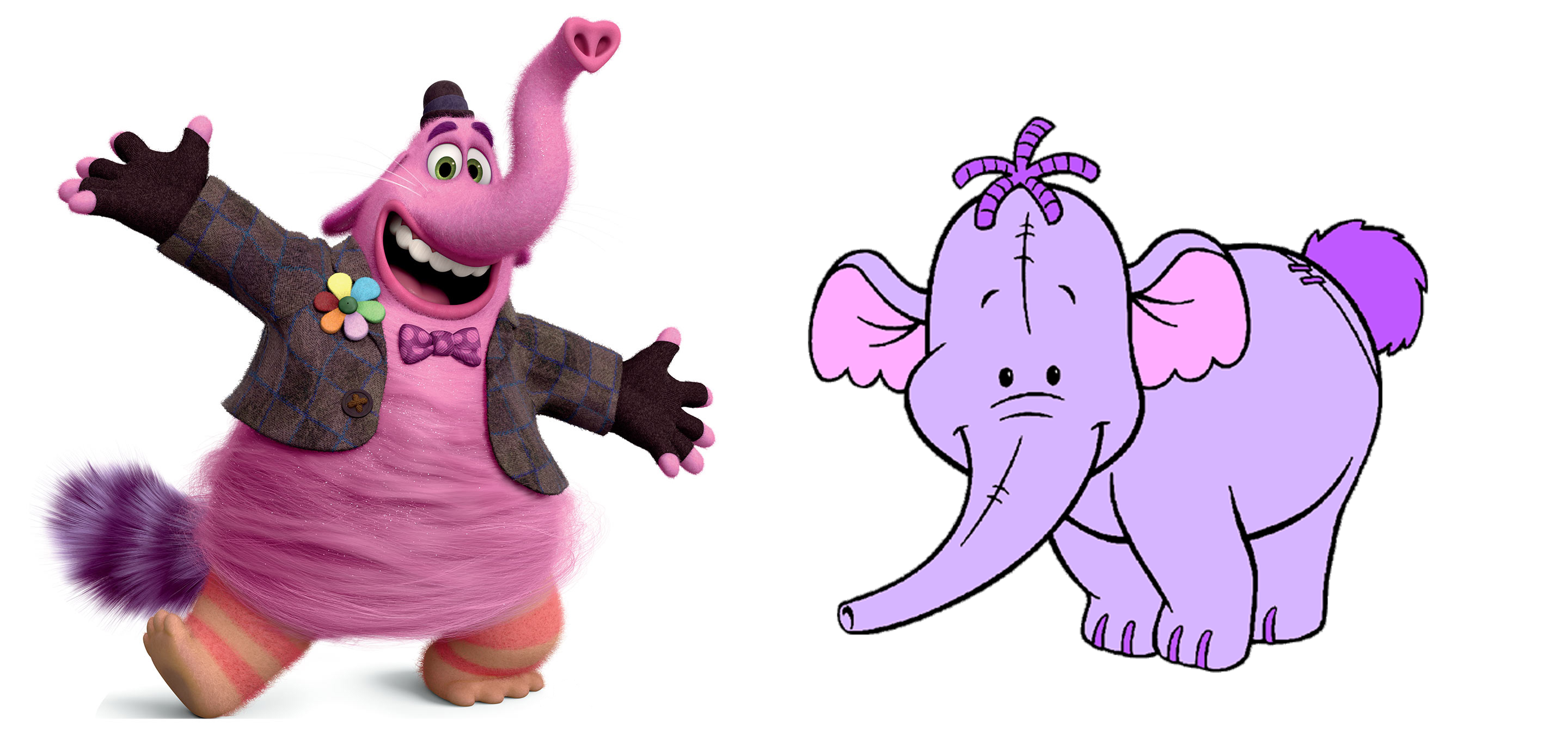
Even Inside Out‘s imaginary elephant character, Bing Bong (Richard Kind), a quirky and suppressed part of its focal child’s mind, reminds us of Winnie the Pooh‘s Heffalump, an imaginary character in Piglet’s mind which resembles an elephant (“heffalump” is Milne’s interpretation of how a child might mispronounce “elephant”).
Pooh is the only character who does not correspond to the emotions of Inside Out, but mirrors the whole of Christopher Robin himself interacting with the other characters, who represent the distinct aspects of his psyche. Pooh is friendly, thoughtful and naive, much like a child and without one overarching defining characteristic. As an animal extension of Christopher Robin, he aligns more with the girl, Riley, in whom Joy and the other emotions reside. But Pooh, in his dogged childlike devotion to Christopher Robin above all else, also corresponds in other ways to Joy, who is the leader of the emotions within Riley, loves her beyond all else and considers Riley’s happiness her life purpose.
Whether or not any of these parallels were deliberate on the part of Inside Out’s creators is unclear, but the two Disney universes share some undeniable, powerful similarities. Regardless, both casts of characters illuminate the complex and wondrous nature of a child’s mind and the beautiful power of imagination.

